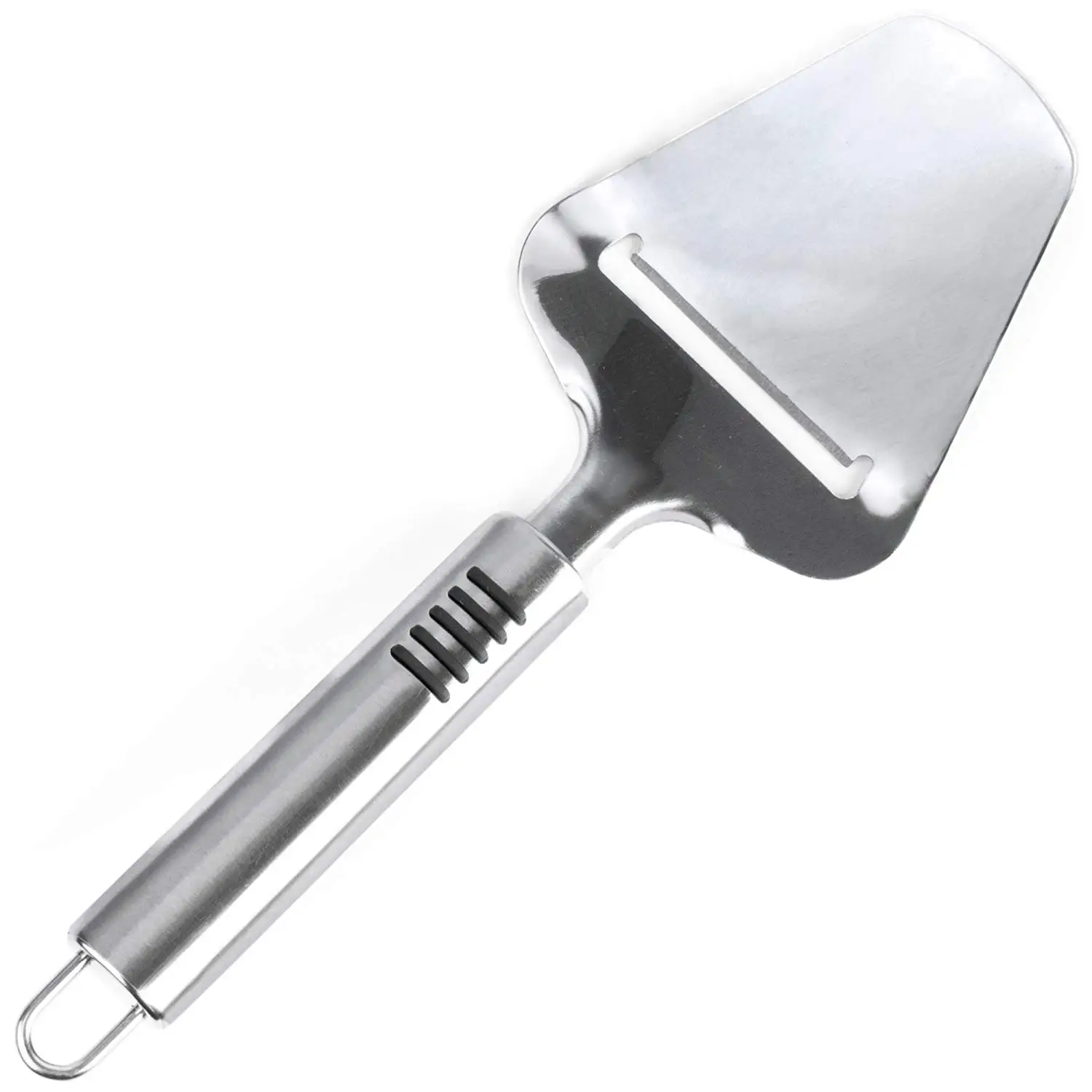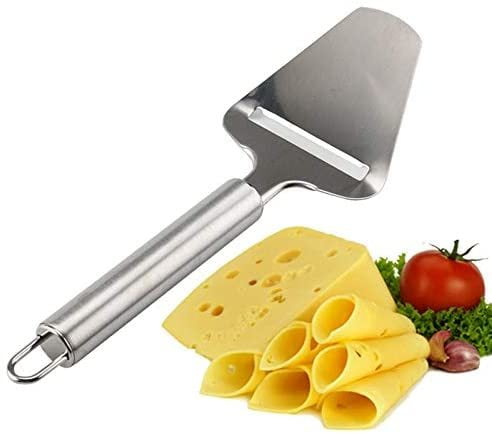

Now that you know more about cheese slicers, it’s time to start shopping. Wire blades on cheese cutters are generally safer because they are less likely to cut through meats or harder foods. More caution is needed with a straight-edge blade than a wire blade. Cut away from your body, and keep the blades sharp.

Using a cheese slicer requires the same level of caution as using any standard kitchen knife. Base/block-style slicers can cut hard, semihard, semisoft, or soft cheeses with equal success. Handheld-style cheese slicers are more suited for hard or semihard cheeses. Wire blades don’t usually have the strength to cut through meats like salami or harder foods like nuts.

If a base/block model uses a hard-edge blade instead of a wire blade to cut, then there are more options for the types of food they can process. Base/block models fine-slice foods like sausages, peppers, lettuce, cucumbers, and radishes. VersatilityĬheese slicers also can be used for cutting other foods.

Pie-serving-style handheld slicers cannot adjust thickness, but you could layer the slices to increase the thickness. Some wire-bladed handheld models have adjustable rollers that can vary the thickness of cuts. While you can cut a 2-inch-thick piece of cheddar with the base/block model, cheese slicers are better suited for thinner slices. There is more room for flexibility in thickness when cutting with a base/block-style cheese slicer, because you can move as much or as little of the cheese block under the wire or blade as you like. Keep in mind that these models take up more storage space. It’s generally easier to slice cheeses using a base/block slicer. When it comes to cutting cheese, most of the work is done by the blade, if it’s sharp enough. Ergonomic handles also can mitigate wrist and grip strain.īase/block models have large handles that allow you to put pressure on the blade without straining. A strong handle helps with steady and constant pressure during cutting, and the shape or contour can reduce strain. If you had a large amount of cheese to cut, your wrist and hand take the brunt of the stress. ComfortĬomfort is important when it comes to handheld cheese slicers. Plastic handles, some featuring a silicone sleeve, are also common for comfort and ergonomics. The bodies of handheld models are usually constructed of lighter, more durable materials like zinc alloy. The variety has more to do with personal preference, as some prefer the natural look of wood, others prefer nonporous steel, and some choose plastic cutting surfaces. Functionally, these materials are similar. The base portion of these models are made from various materials like metal, wood, plastic. It’s also tough enough to cut through harder cheeses that have a moisture content of less than 50 percent, like Romano and Parmesan. Steel is one of the few metals that can be considered food grade. Stainless steel is the most common material used for blades and cutting wires. Some cheese slicers of this type can actually function as a serving board. These apply a guillotine-like cutting motion with a wire or steel blade. Operating a tool like this means drawing the blade or wire across the top of the cheese to create a shaving.īase, also known as block, models are designed for use on a countertop or tabletop. The other handheld design features a shaving blade inserted in the middle of a shovel-style head. For some models, the tension on the wire can be adjusted. One type is a slingshot, or Y-shaped, model that slices cheeses with a taut wire stretched parallel to the blade. If you’re trying to figure out which style is best for your needs and budget, read on. There are different forms and styles of cheese slicers, and some can cut foods other than cheese. Best of all, you can use the included soapstone chalk to label the handle of each knife with the style of cheese it’s intended to cut.Photo: What to Consider When Choosing the Best Cheese Slicer Our new black resin cheese knife is especially good for long-aged, firm styles, because it’s even tougher and more durable than wood. For example, the cheese knife sets in our gift shop are designed to function as a spreader-like tool for enjoying softer cheeses while being sharp and sturdy enough to handle hard cheeses. Some small-scale cheese knives combine traits from different styles to serve multiple purposes. While it’s not specifically designed for softer cheeses, it’s also quite versatile: you can use it with semi-firm wedges like Meadow Creek’s Mountaineer and Appalachian as well as soft cheeses if need be. A post shared by ARENA EQUESTRIAN style of blade is also known as a trapezium knife, and its stubby-yet-sharp blade is great for cutting chunks of even the hardest cheeses.


 0 kommentar(er)
0 kommentar(er)
